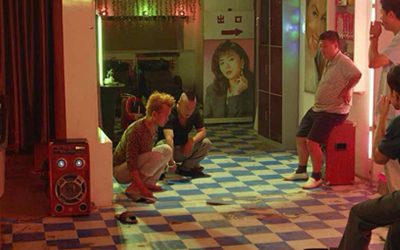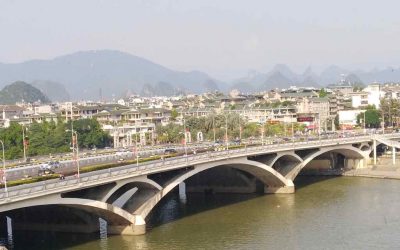Laozi’s Mother is the goddess who created the world
In Taoist thought, great mysteries are not explained with definitive statements, but with paradoxical images, fragmentary myths, and bodily metaphors. One such mystery is the origin of the world—and for Taoism, that origin does not lie in a creation “from the outside,” with a god shaping reality, but in an internal process of transformation, where chaos gives birth to order, and order returns to chaos.
Since the early centuries of our era, the figure of Laozi, the Old Master, began to change. He transformed from a wise philosopher into the incarnation of the Dao itself. He became both the origin and the body of the Dao. But in this cosmology, it is sometimes forgotten that he himself was born of a mother: the so-called Mother Li, the Jade Maiden of the Dark Mystery.
The Mother of Laozi as the creator of the universe
Mother Li is therefore the creator of the universe for the Taoists—a very special kind of creation, as it arises not from an external command but from the continuous transformations that nourish the Dao, from that endless cycle of creation and destruction that, for Taoism, is the very fabric of the world. In fact, much like in other cosmogonies, the birth of Laozi is accompanied by the death of Mother Li.
According to Taoist texts, Laozi was born without a father. He was conceived when his mother absorbed a drop of “heavenly dew.” During the day, she was pregnant; at night, the Old Lord would leave her womb to study the Dao. Thus, he spent more than eighty years in gestation, awaiting the perfect day to be born—a day when birth and death would no longer exist. Finally, he was born through his mother’s armpit, already with white hair and beard, and departed without looking back. Upon seeing him, his mother fell dead from the shock—or, in more benevolent versions, she ascended to the heavens in a chariot of clouds, after revealing to her son the secrets of immortality[1].
The Mother of Laozi is not a mere passive vehicle: she is the very matrix of the cosmos. “The Dao has taken form in her. Through her, it has revealed itself” (Schipper 2011: 150). She is the intermediary between non-being and being, between the undifferentiated void and the world of the “ten thousand things.”
But the myth does not end there. Some texts claim that it was Laozi himself who created his mother—that he first transformed into the Jade Maiden and then reabsorbed himself into her in order to be reborn. The maternal womb and the primordial chaos are the same: the point from which all multiplicity begins.
In Taoism, there is no external creator.
This myth suggests a theology profoundly different from the one we’re used to. In Taoism, there is no external creator. The universe was not made “out of nothing,” but emerged from chaos like a child from its mother. That is why creation is always transformation, constant mutation. Laozi himself declares: “I transform my body, passing through death to live again. I die and am reborn, and each time I have a new body.”
And yet, what dies is not lost—it is transformed. So taught Laozi’s mother in her brief dialogue before disappearing: that true life is spontaneous action, and that death is not an end but a passage to another form of existence. The Dao does not create—it transmutes. It does not impose form—it lets things become. And it does so, always, through the body of the Mother.
The universe is born from when the Dao manifests in a woman.
The importance of this scene cannot be overstated: the universe is born from chaos when the Dao manifests in a woman. In fact, the birth of Laozi is synchronized with the creation of the universe. At the moment of his birth, when the mother’s body opens, the “Heavenly Treasures in Vermilion Script” also appear—revealed scriptures containing the principles of the cosmos. As in other foundational myths (see the biblical Genesis), word and birth are simultaneous. But in this case, it is the female body that opens as a cosmic womb.
Although many modern readings of Taoism focus solely on Laozi as the author of the Daodejing, we must not overlook his mother. Through her, the cycle of constant transformation is revealed. Creation as a continuous process of death and regeneration. The figure of Mother Li is not a mythological detail: she is the very heart of the Taoist vision of the universe. She is the primordial matrix, the vessel of the Dao, the mother goddess who gives shape to all things.
Perhaps, in this vision, there is something profoundly liberating. Instead of an all-powerful god who creates from outside, we find a universe born like a child in the womb of a nameless mother, without beginning or end. A universe that is ourselves. A body that dies and is reborn. A mystery that reveals itself just when we allow it to be.
[1] This post is based in the information provided by Schipper, Kristofer. The Wholeness of Chaos: Laozi on the Beginning. In Schipper et al. China’s creation and origin myths. Brill. 2011.
About me: I have spent 30 years in China, much of the time traveling and studying this country’s culture. My most popular research focuses on Chinese characters (Chinese Characters: An Easy Learning Method Based on Their Etymology and Evolution), Matriarchy in China (there is a book with this title), and minority cultures (The Naxi of Southwest China). In my travels, I have specialized in Yunnan, Tibet, the Silk Road, and other lesser-known places. Feel free to write to me if you’re planning a trip to China. The travel agency I collaborate with offers excellent service at an unbeatable price. You’ll find my email below.
Last posts
Shock Wave 2- An entertaining action movie
Shock Wave 2- An entertaining action movie In short: A nice movie, with an original script, plenty of surprises, the right dose of love, and a slightly exaggerated dose of violence, but nothing excessive for what is fashionable nowadays. The year 2020 seems to have...
Hong Ying- An Art of Love without art and without love
Hong Ying- An Art of Love without art and without love In Brief: A scandalous novel that fails to shock, and an art of love that is conspicuous by its absence. Already from the beginning, we know that this is a love story without a future because the novel begins with...
Black Coal, Thin Ice, by Diao Yinan
Black Coal, Thin Ice, by Diao Yinan In short: a film narrated in a gray and sometimes sordid atmosphere, in a dark winter, of climate and spirit, which presents a mystery in which the viewer is gradually seduced. In an eminently mining region, human limbs begin to...
Xian, the ancient imperial capital
Xian, the ancient imperial capital In short: The ancient city inside the city wall retains a fascinating atmosphere. Its great monuments on the outskirts, such as the Terracotta Warriors, are among China's favorite attractions. Xian is undoubtedly one of the most...
Xin Ran – Sky Burial: An Epic Love Story of Tibet
Xin Ran - Sky Burial: An Epic Love Story of Tibet In Brief: A work full of exoticism that describes some interesting customs of the Tibetan nomads, but fails to convey emotions to the reader. Sky Burial: An Epic Love Story of Tibet is a novel set in the late 1950s. A...
Travel to Guilin and enjoy China’s most beautiful landscape
Why must you travel to Guilin? Guilin is one of the most touristic cities and therefore one of the most visited. Most international tours include a stop in Guilin, at least the time to take the famous Li River cruise, and among domestic tourists, everyone is eager to...










